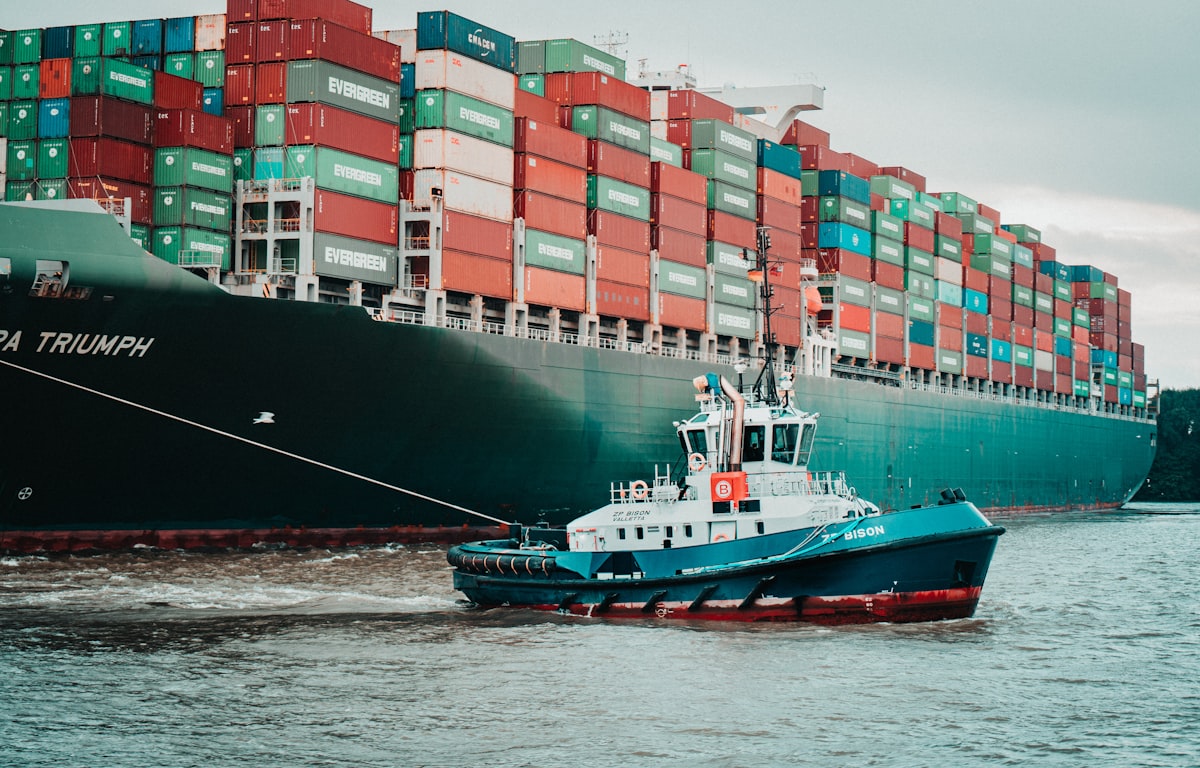Shifting Tides: Moving Endangered Supply Chains from China to Closer Shores

By Jack Wells, University of Chicago
As early as the 1990s, companies began shifting their supply chains to China, drawn by the allure of lower production costs, a vast labor pool, and increasingly liberalized trade policies. As a result of significant expansion after China's admission to the World Trade Organization in 2001, the Chinese economy now accounts for 20% of global manufacturing.[1] The move towards China as a manufacturing hub was propelled by the promise of enhanced efficiency and profitability for businesses worldwide, setting the stage for profound changes in how and where goods are produced and distributed. However, in the face of the COVID-19 pandemic, destabilizing regional conflicts in both Eastern Europe and the Middle East, and Houthi control over the strategic Bab al-Mandab Strait, supply chain shortages have blighted the international economy with inflationary pressures, chronic underconsumption of consumer goods, and scarcity of natural resources necessary for the production of those goods.[2] Global economic difficulties combined with new tariffs and rising uncertainty have prompted businesses and the United States government to take action in order to secure their supply chains. This has resulted in significant efforts to move supply chains away from China and closer to home, whether that be through domestic reshoring in the U.S. or in a geographically closer nation like Mexico.
The trend towards nearshoring has been particularly pronounced in industries where speed to market is critical and where there is a need to closely manage the quality and customization of products. Companies in the automotive, electronics, and textiles industries are increasingly looking to Latin America and Mexico for nearshoring opportunities. Upwards of 90% of North American manufacturing executives expressed that they plan to move some or all of the supply chains to different countries within five years with a substantial portion of that investment going to Mexico.[3] Its proximity to the United States not only reduces shipping times and costs, but also facilitates a higher degree of coordination and control over the manufacturing process.[4] That’s why Mexico has emerged as a favored destination for nearshoring by North American companies.[5] In fact, Mexico’s foreign direct investment rose by an astounding 48% over the last year.[6] With businesses attracted by the combination of lower labor costs relative to the U.S. and the benefits of trade agreements like the United States-Mexico-Canada Agreement (USMCA), Mexico has now become the biggest exporter to the U.S. In 2023, Mexican exports to the U.S. rose 4.6% to a record high of $475.6 billion and during the same period U.S. imports from China fell 20.3% to $427.2 billion.[7] This reversal appears to be a sign that the age of the Chinese manufacturing monopoly is coming to an end. A report from Morgan Stanley recently forecasted that Mexican exports to the U.S. will increase from $475.6 billion to an estimated $609 billion in the next five years.[8]
Despite this rosy outlook, there are many hurdles that both Mexican and American businesses will face in the coming years if they hope to grow this partnership. The Mexican energy grid has been chronically underfunded and will require an estimated $40 billion in investment to meet the expanded grid capacity demanded by nearshoring.[9] In addition, the USMCA mandates that “40-45% of the value of automotive content must be made by workers earning at least $16/hour” for the product to qualify for the protections of the USMCA.[10] For the automotive industry, this means that hourly labor costs can be higher in Mexico than in China to take advantage of the USMCA. The USMCA also strengthens the rights of workers to form unions and the Mexican court systems are notoriously slow, partial, protectionist, and prone to corruption when resolving labor disputes.[11]
In light of these potential pitfalls, many companies have opted to reshore and begin relocating their manufacturing and distribution to the U.S. Between August 2022 and August 2023, businesses increased manufacturing construction spending in the U.S. by over 80%.[12] According to the Census Bureau, corporate investment in American manufacturing amounted to $114.7 billion.[13] The growth of investment in manufacturing and distribution channels has manifested in 360,000 hires in the American manufacturing industry in 2022 alone, a 53% increase from 2021.[14] This move towards reshoring not only aims to secure supply chains but also seeks to capitalize on the benefits of proximity to the U.S. market, including faster lead times and reduced transportation costs.
Yet, the success of reshoring efforts is contingent upon addressing several domestic challenges. First, China currently produces double the amount of energy that the U.S. does despite a smaller economy, with lower per-capita energy consumption.[15] On top of that disparity, the American grid has become dramatically less reliable with an increasing focus on inconsistent renewables like wind and solar and a lack of acceptance of reliable sources like nuclear.[16] Second, high labor costs in the U.S. necessitate a focus on automation and technological innovation to ensure competitive pricing.[17] Third, there is a growing need for skilled labor capable of operating advanced manufacturing technologies. Roughly half of all openings for skilled laborers in the American manufacturing industry remain vacant because of a lack of qualified candidates.[18] Government policies and incentives will play a pivotal role in facilitating this transition, with initiatives such as tax breaks, grants, and training programs being critical to support the reshoring ecosystem.
The American government has already begun this process with the recent passage of the CHIPS and Science Act in 2022. The legislation provides for $280 billion in spending over the next decade - all with the purpose of creating a sustainable and technologically competitive semiconductor industry domestically in the U.S.[19] This $280 billion is broken down into $200 billion for scientific research and development, $24 billion in tax credits to semiconductor manufacturers, $52.7 billion for workforce development and manufacturing, and another $3 billion for 5G networks and new research.[20] Nearly 18 months later, there are now 40 new semiconductor projects across the U.S.[21]
The reconfiguration of global supply chains, from a concentrated reliance on China to a more diversified and resilient model incorporating nearshoring and reshoring, marks a significant shift in the international economic landscape. The push towards nearshoring in Mexico and reshoring within the United States reflects a strategic response to the challenges of geopolitical instability, supply chain disruptions, and the need for sustainable development practices. Looking ahead, the success of these strategies hinges on overcoming a range of operational, regulatory, and infrastructural challenges. For nearshoring, the development of energy infrastructure, labor skills, and regulatory compliance in host countries will be critical. For reshoring, the United States must address issues of labor costs, workforce skill gaps, and the supportive policy environment necessary to foster a competitive manufacturing sector. As these efforts progress, the potential for a more balanced and resilient global supply chain ecosystem emerges, promising economic benefits while also posing new challenges for businesses, workers, and policymakers alike. The evolution of global supply chains thus remains a dynamic element of the international economic order, reflecting the ongoing adaptation to a rapidly changing world.
Bibliography:
- West, Darrell M., and Christian Lansang. "Global Manufacturing Scorecard: How the US Compares to 18 Other Nations." Brookings Institute, July 10, 2018. https://www.brookings.edu/articles/global-manufacturing-scorecard-how-the-us-compares-to-18-other-nations/.
- "Can Thinking Local Fix Global Supply Chains?" Morgan Stanley, July 25, 2022. https://www.morganstanley.com/ideas/slowbalization-global-supply-chain.
- "Mexico Is Now the Top Exporter to the US. Is There Room for Growth?" Boston Consulting Group, February 20, 2024. https://www.bcg.com/publications/2024/mexico-top-exporter-to-us-growth-outlook.
- Howells, Richard, and Stephanie Overby. "Five Realities About Nearshoring and Reshoring Strategies." SAP Insights. Accessed March 17, 2024. https://www.sap.com/insights/viewpoints/five-realities-about-nearshoring-and-reshoring-strategies.html.
- Zaga, Daniel, and Alessandra Ortiz. "Nearshoring in Mexico." Deloitte Insights, July 13, 2023. https://www2.deloitte.com/us/en/insights/economy/issues-by-the-numbers/advantages-of-nearshoring-mexico.html.
- Alvim, Leda, and Maya Averbuch. "Supply Chain Latest: U.S. Nearshoring Proof Grows as Mexico Exports Jump." Bloomberg, June 28, 2023. https://www.bloomberg.com/news/newsletters/2023-06-28/supply-chain-latest-us-nearshoring-proof-grows-as-mexico-exports-jump?embedded-checkout=true.
- "Mexico Is Now the Top Exporter to the US. Is There Room for Growth?" Boston Consulting Group, February 20, 2024. https://www.bcg.com/publications/2024/mexico-top-exporter-to-us-growth-outlook.
- "Mexico Is Poised to Ride the Nearshoring Wave." Morgan Stanley, June 21, 2023. https://www.morganstanley.com/ideas/mexico-nearshoring-gdp-growth."
- "Mexico Is Poised to Ride the Nearshoring Wave." Morgan Stanley, June 21, 2023. https://www.morganstanley.com/ideas/mexico-nearshoring-gdp-growth."
- Kossick, Robert M. "Commercial, Professional Perspective - Nearshoring to Mexico: Opportunities & Challenges." Bloomberg Law. August 2023. https://www.bloomberglaw.com/external/document/X7FIB1NK000000/commercial-professional-perspective-nearshoring-to-mexico-opport.
- Kossick, Robert M. "Commercial, Professional Perspective - Nearshoring to Mexico: Opportunities & Challenges." Bloomberg Law. August 2023. https://www.bloomberglaw.com/external/document/X7FIB1NK000000/commercial-professional-perspective-nearshoring-to-mexico-opport.
- Conerly, Bill. "U.S. Manufacturers Reshoring, But It Will Take A Long Time." Forbes, August 19, 2023. https://www.forbes.com/sites/billconerly/2023/08/19/us-manufacturers-reshoring-but-it-will-take-a-long-time/?sh=6fd77e944c91.
- McLaughlin, Erin, and Dana M. Peterson. "A Reshoring Renaissance Is Underway." MIT Sloan Management Review, November 2, 2023. https://sloanreview.mit.edu/article/a-reshoring-renaissance-is-underway/.
- "2022 Data Report." Reshoring Initiative, 2022. https://reshorenow.org/content/pdf/2022_Data_Report.pdf.
- Alden, Lyn. "The Hidden Costs of Reshoring." Lyn Alden, August 2023. https://www.lynalden.com/reshoring/.
- Conerly, Bill. "U.S. Manufacturers Reshoring, But It Will Take A Long Time." Forbes, August 19, 2023. https://www.forbes.com/sites/billconerly/2023/08/19/us-manufacturers-reshoring-but-it-will-take-a-long-time/?sh=6fd77e944c91.
- "2022 Data Report." Reshoring Initiative, 2022. https://reshorenow.org/content/pdf/2022_Data_Report.pdf.
- Favilla, Jose, and Karthik Chandrasekaran. "Reshoring Manufacturing to the US: The Role of AI, Automation, and Digital Labor." IBM, December 21, 2023. https://www.ibm.com/blog/reshoring-manufacturing-to-the-us-the-role-of-ai-automation-and-digital-labor/.
- "FACT SHEET: CHIPS and Science Act Will Lower Costs, Create Jobs, Strengthen Supply Chains, and Counter China." The White House, August 9, 2022. https://www.whitehouse.gov/briefing-room/statements-releases/2022/08/09/fact-sheet-chips-and-science-act-will-lower-costs-create-jobs-strengthen-supply-chains-and-counter-china/.
- Badlam, Justin, Stephen Clark, Suhrid Gajendragadkar, Adi Kumar, Sara O’Rourke, and Dale Swartz. "The CHIPS and Science Act: Here’s What’s in It." McKinsey & Company, October 4, 2022. https://www.mckinsey.com/industries/public-sector/our-insights/the-chips-and-science-act-heres-whats-in-it.
- Buttle, Rhett. "One Year Later: Five Ways The CHIPS And Science Act Can Support Small Businesses." Forbes, February 27, 2024. https://www.forbes.com/sites/rhettbuttle/2024/02/27/one-year-later-five-ways-the-chips-and-science-act-can-support-small-businesses/?sh=3154ca12d99c.



